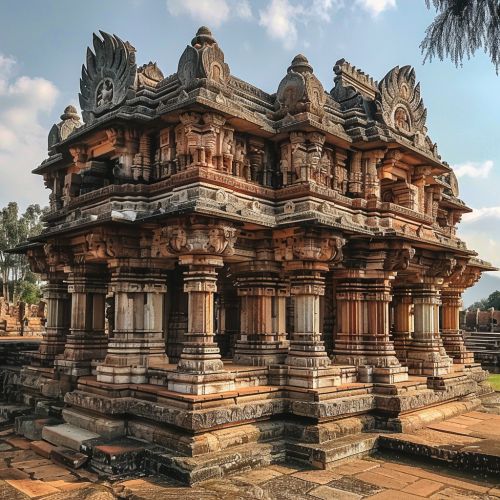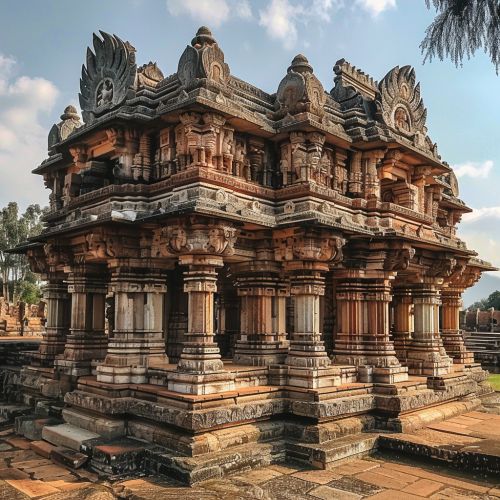Later Cholas
Later Cholas
The Later Cholas represent a significant period in the history of South India, marked by the resurgence of the Chola dynasty after a period of decline. This era, spanning approximately from the 9th to the 13th centuries, saw the Cholas emerge as a dominant political, economic, and cultural force in the Indian subcontinent.


Historical Background
The Chola dynasty, one of the longest-ruling dynasties in the history of southern India, had its origins in the fertile valley of the Kaveri River. The early Cholas were known for their contributions to Tamil culture and literature. However, their power waned by the 4th century CE, leading to a period of obscurity until their revival in the 9th century.
The resurgence of the Cholas began with Vijayalaya Chola, who captured Thanjavur in 850 CE. This marked the beginning of the Later Chola period, characterized by territorial expansion, administrative reforms, and cultural renaissance.
Political Expansion
The Later Cholas expanded their territory through a series of military campaigns and strategic alliances. Under the leadership of Rajaraja Chola I (985-1014 CE), the Chola empire extended its influence over the entire Tamil region, parts of Karnataka, and even Sri Lanka. Rajaraja's son, Rajendra Chola I (1012-1044 CE), further expanded the empire to the Ganges in the north and Southeast Asia, including the Malay Peninsula and the Indonesian archipelago.
The Chola navy played a crucial role in these expansions, establishing maritime dominance and facilitating trade across the Indian Ocean. The Cholas also maintained diplomatic relations with the Song dynasty of China and the Srivijaya Empire in Southeast Asia.
Administration and Governance
The Chola administration was highly organized and efficient, with a well-defined hierarchy of officials and a system of local self-government. The empire was divided into provinces called mandalams, which were further subdivided into valanadus and nadus. Each administrative unit had its own officials responsible for maintaining law and order, collecting taxes, and overseeing agricultural activities.
The Cholas are particularly noted for their village administration system, which allowed for a significant degree of local autonomy. Village assemblies, known as sabhas or ur, played a crucial role in managing local affairs, including the maintenance of irrigation systems, temples, and public works.
Economy and Trade
The Later Chola period was marked by economic prosperity, driven by agriculture, trade, and commerce. The fertile plains of the Kaveri River provided abundant agricultural produce, which was the backbone of the Chola economy. The Cholas also developed an extensive network of trade routes, both overland and maritime, facilitating the exchange of goods with distant regions.
The Chola ports, such as Nagapattinam and Kaveripattinam, were bustling centers of trade, attracting merchants from across the Indian Ocean. The Cholas exported textiles, spices, and precious stones, while importing luxury goods such as silk, horses, and perfumes.
Art and Architecture
The Later Cholas are renowned for their contributions to art and architecture, particularly in the construction of grand temples. The Brihadeeswarar Temple at Thanjavur, built by Rajaraja Chola I, is a UNESCO World Heritage site and a masterpiece of Dravidian architecture. The temple is known for its massive vimana (tower), intricate carvings, and bronze sculptures.
The Cholas also excelled in bronze casting, producing exquisite statues of Hindu deities, particularly Nataraja, the dancing form of Shiva. These bronzes are celebrated for their artistic excellence and are considered among the finest examples of Indian metalwork.
Literature and Culture
The Later Chola period witnessed a flourishing of Tamil literature and culture. The Chola kings were great patrons of the arts and supported poets, scholars, and musicians. The period saw the composition of several important literary works, including the epic poems "Kamba Ramayanam" by Kambar and "Periya Puranam" by Sekkizhar.
The Cholas also promoted the Bhakti movement, which emphasized personal devotion to deities such as Shiva and Vishnu. This movement had a profound impact on Tamil culture and religious practices, leading to the construction of numerous temples and the composition of devotional hymns.
Decline and Legacy
The decline of the Later Cholas began in the 12th century, with the rise of the Pandyas and the Hoysalas. The Chola empire faced internal strife, invasions, and a gradual loss of territory. By the end of the 13th century, the Chola dynasty had effectively come to an end.
Despite their decline, the legacy of the Later Cholas endures in the cultural and architectural heritage of South India. Their contributions to art, literature, and governance have left an indelible mark on Indian history.
